Welcome to the ancient city of Babylon, Iraq! Located roughly 50 miles south of Baghdad in present-day Iraq, Babylon holds a significant place in history. With a legacy dating back to the 18th century BCE, Babylon was once the capital of the mighty Babylonian Empire.
This city is famous for its architectural wonders, including the iconic blue Ishtar Gate, Nebuchadnezzar’s Palace, and the Hanging Gardens, one of the Seven Wonders of the Ancient World. I had the pleasure of visiting it thanks to my guides Jafar and Ali from Bil Weekend.
Babylon was not only a center of political power but also a hub of intellectual and cultural achievements. It was home to famous scholars, astronomers, and mathematicians, who made significant contributions to various fields of knowledge. The Code of Hammurabi, one of the earliest known legal codes, was created in Babylon.
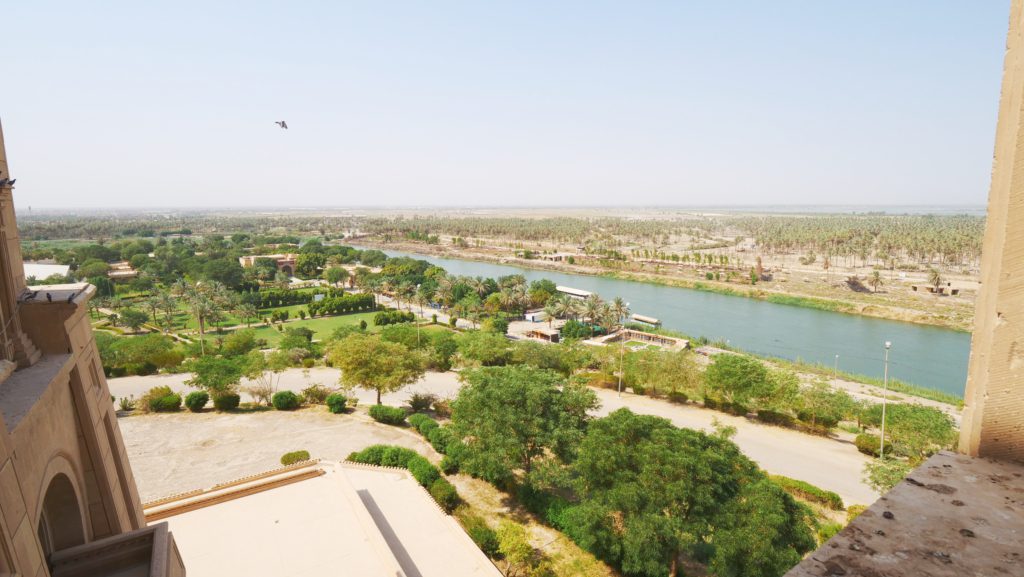
Alexander the Great had a significant connection to the ancient city. The infamous conqueror chose Babylon as his capital after taking down the Persian Empire. He admired and respected Babylon’s rich history and sought to incorporate its influence into his own rule and administration. He would later die in the city of a mysterious ailment in the palace of Nebuchadnezzar in June 323 BC.
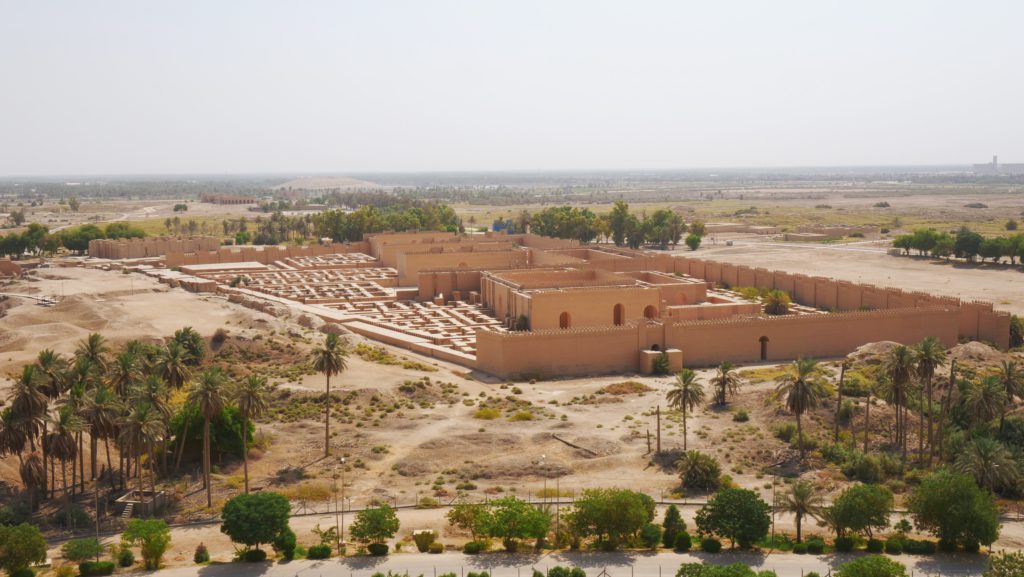
Despite the passage of time, Babylon continues to captivate the imaginations of historians, archaeologists, and visitors alike. Now a UNESCO World Heritage Site, Babylon is a treasure trove of ancient ruins, which I got to visit in September 2022 with my friends from Bil Weekend.
For three weeks every year, roughly 20 million pilgrims make the trek from Baghdad to Karbala to the southwest. The pilgrimage commemorates a battle that took place 1400 years ago. Along the roughly 65-mile-long route, generous vendors offer free food to travelers making their way between the cities.
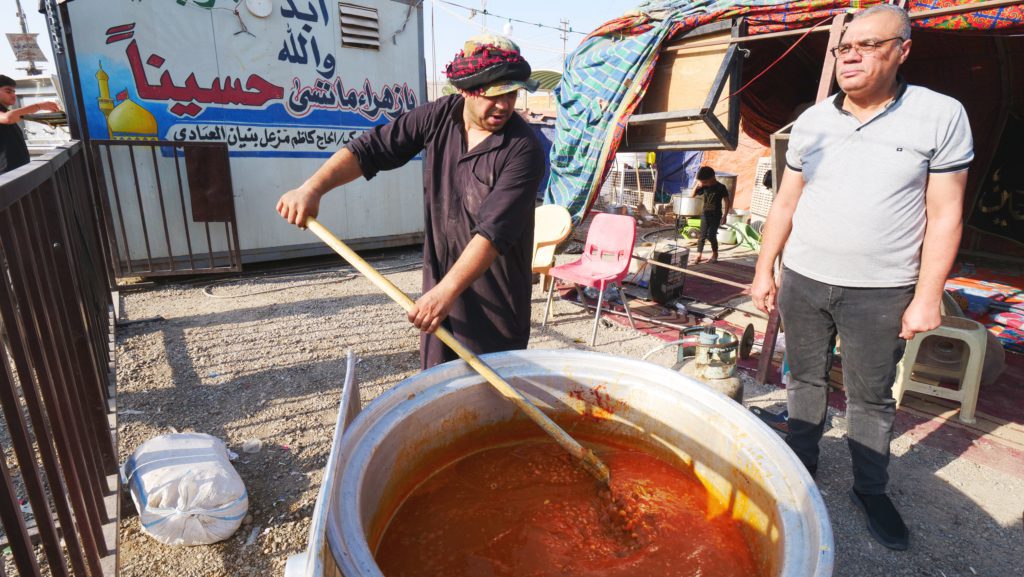
Vendors offer dishes such as lentil stew and fava-bean-and-lamb stew called fasolia. They also had some delicious khubz tannour, a flatbread made in a tanoor oven. They were out of the lentil stew by the time we arrived, but there was still plenty of fasolia left. The mix of al dente beans and tender, fatty lamb blew me away. It was hearty and rich, and was a wonderful way to experience a bit of an Iraqi tradition!
One of the most infamous leaders in modern world history was Saddam Hussein. The President of Iraq from 1979 to 2003, Hussein was notorious for his brutal dictatorship. Decades after his execution in 2006, his lavish palace just outside of Babylon still stands, abandoned and derelict.
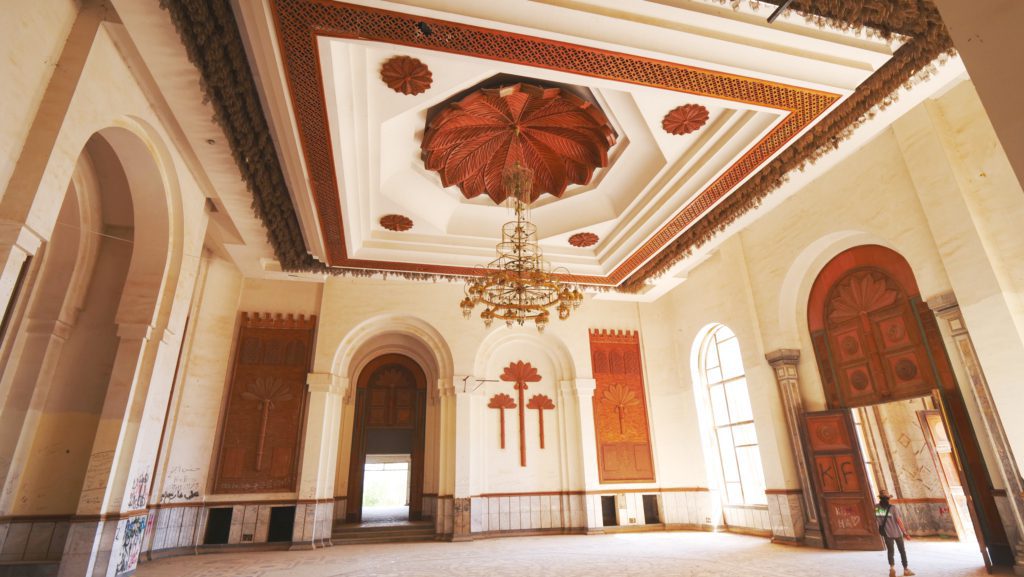
The interior of Saddam’s palace was breathtakingly large. The dictator designed the magnificent structure to resemble the famous Hanging Gardens. The outer walls of the palace were adorned with intricate patterns depicting the Arabic letters for “SH”. The palace boasted impressive acoustics, adding to its grandeur.
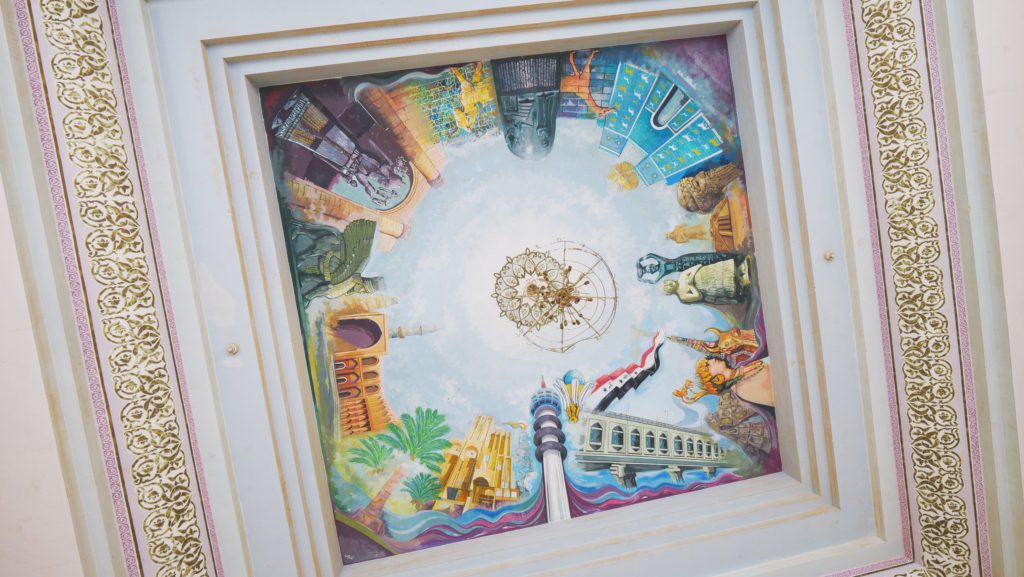
Thanks to our VIP access, we were able to explore more areas of the palace. We headed through the kitchens and made our way up to the master bedroom. It was massive but covered in dust due its disuse since 2003. From the rooftop, we had a panoramic view of Babylon, including a glimpse of the majestic Euphrates River. Our guide even showed us the rumored former location of the Hanging Gardens!
The most well-known landmark in the ancient city of Babylon, Iraq is the Ishtar Gate. King Nebuchadnezzar II built the gate, known for its vibrant blue bricks, around 575 BCE to serve as the city’s main entrance. He dedicated it to the Babylonian goddess Ishtar, as well as other deities. Carved and painted on the gate’s walls are animals including bulls, lions, and dragons.

However, the structure that currently stands at the entrance to Babylon is not the original Ishtar gate. Archaeologists excavated the original gate between 1902 and 1914. You can now see pieces of it in various museums around the world. An incomplete reconstruction stands in the Pergamon Museum in Berlin, Germany.
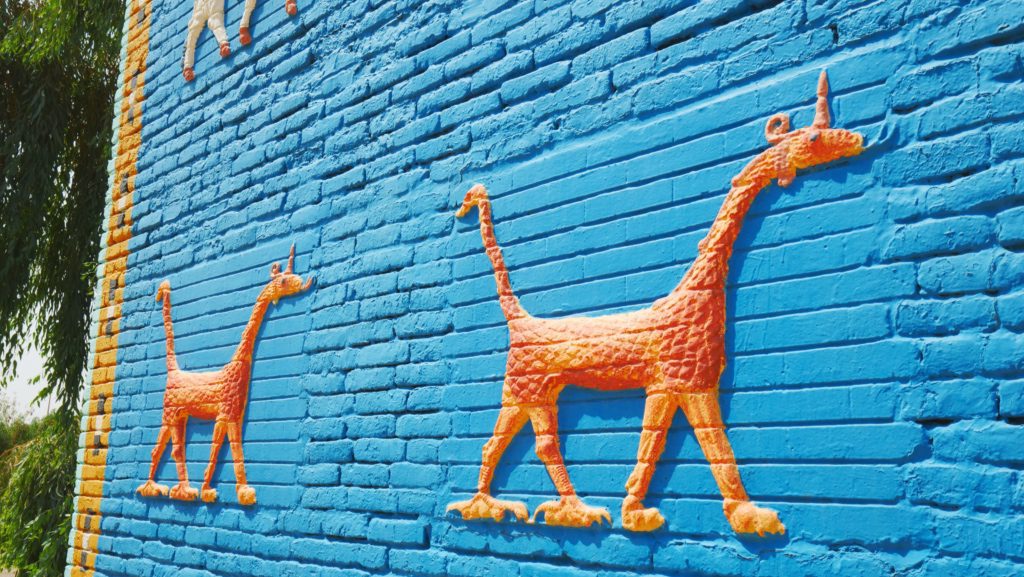
Seeing such an icon of world history with my own eyes was incredible for me. I’ve wanted to visit Babylon since I was a kid, so finally being there and seeing the gate—even though it’s a replica—blew me away. It’s quite beautiful and is a must for anyone traveling through Iraq!
Inside the city of Babylon, Iraq, on the other side of the Ishtar Gate, lies a map showing the locations of the city’s prominent ruins. As you venture through the gate, you’ll see the remnants of old buildings, the iconic Street of Procession, and the Southern Palace. With a staggering 600 rooms, this palace served as both an administrative center and a defensive stronghold.
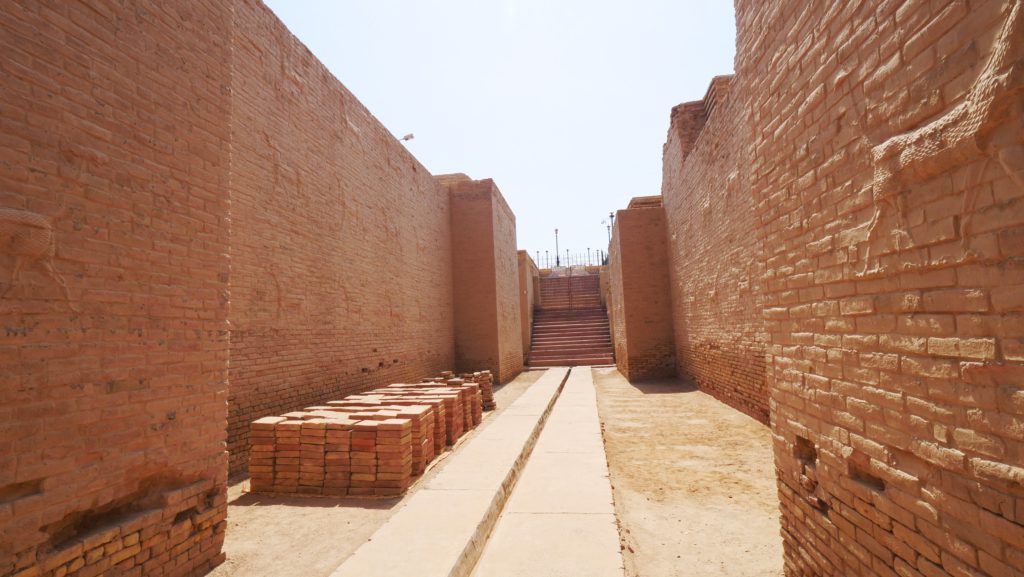
During our exclusive tour, we were granted access to a restricted area that is typically off-limits to most visitors. Adorning the walls are intricate depictions of dragon-like creatures reminiscent of those found on the famous Ishtar Gate. Interestingly, all these creatures face north, which is believed to be the direction from which kings would arrive.
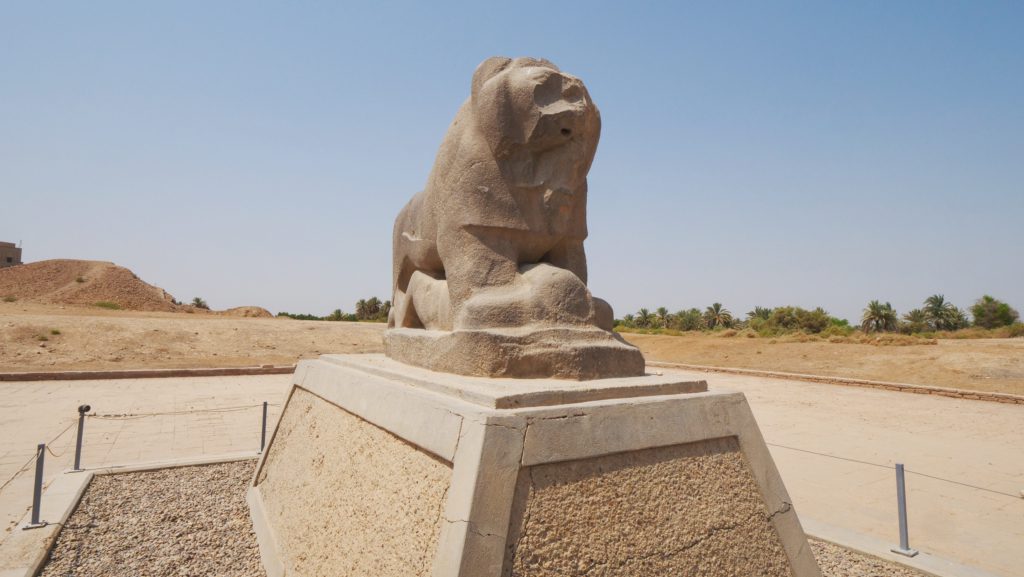
Moreover, we had the privilege of visiting the Temple of Ninmakh—an awe-inspiring structure crafted entirely out of mud—as well as witnessing the grandeur embodied by the Lion of Babylon statue. We also visited the Throne Hall, which is where Alexander the Great died!
My favorite dish I tried in Babylon, Iraq is a hearty rice dish called quzi. Quzi consists of slow-cooked lamb, roasted nuts, and raisins, all served over a bed of fragrant rice. In Iraq, it usually consists of a whole lamb stuffed with rice, vegetables, spices, and nuts. You can find variations of it in other Middle Eastern countries, including Jordan, Oman, and Saudi Arabia.
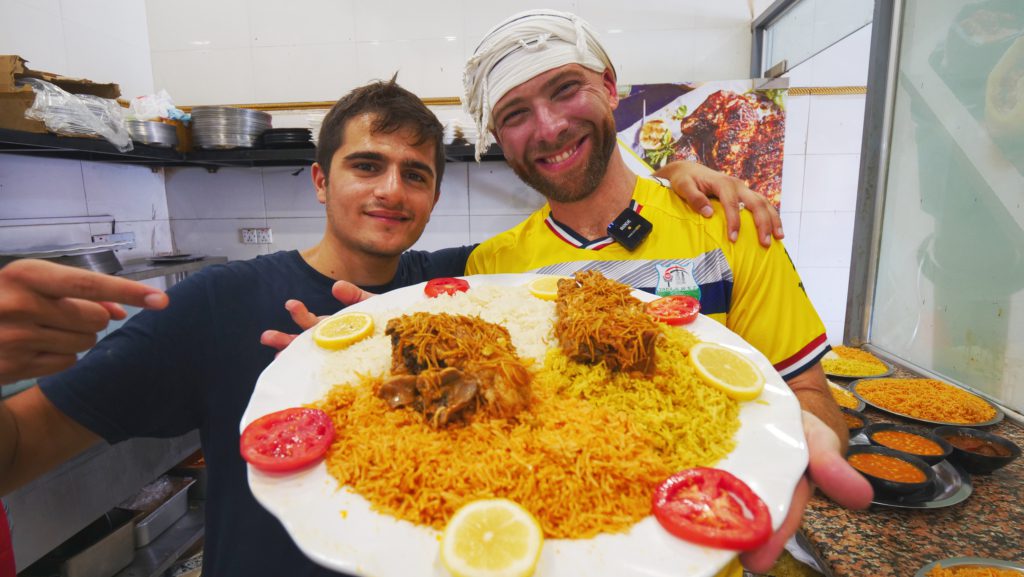
I loved the mixture of biryani rice, tender lamb, raisins, and roasted nuts. It was savory and sweet, nutty and earthy. I enjoyed it with fasiola yabsa, which is a white bean stew, an okra stew called bamia, and a popular tomato-and-eggplant dish called tepsi baytinijan. If you enjoy other Middle Eastern rice and meat dishes like kabsa, shuwa, and zarb, this dish is righ tup your alley!
Visiting Babylon, Iraq was a dream come true. From seeing the vibrant blue bricks of the legendary Ishtar Gate, to walking the streets of the ancient city, to enjoying one of Iraq’s most beloved dishes, I was in heaven. As a history buff and a foodie, it was one of my favorite days of my entire trip.
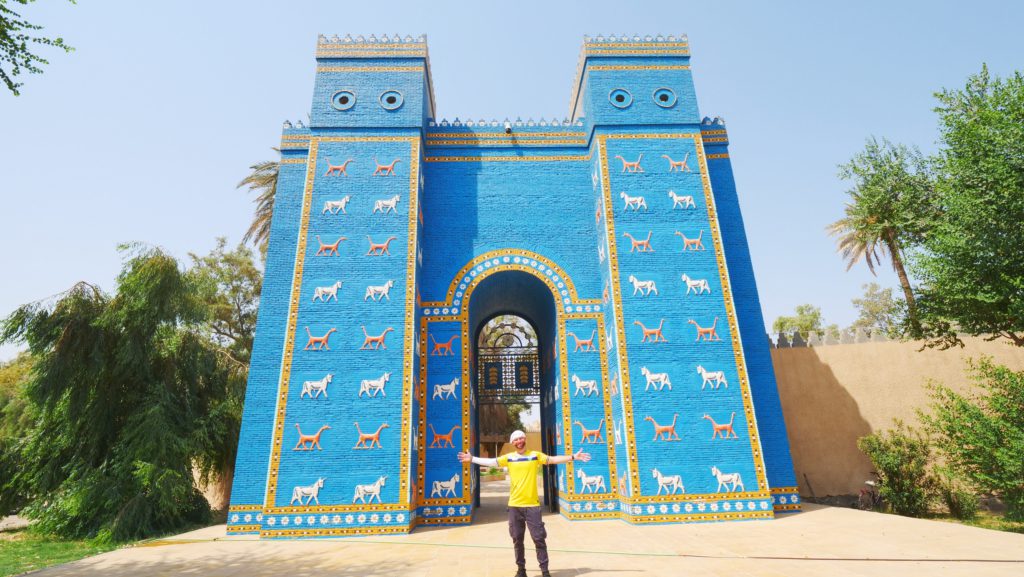
If you’re a history fanatic like me, don’t forget to visit Babylon. It’s an easy day trip from Baghdad and is along the route to Karbala. I have a feeling you’ll enjoy it as much as I did!
Counter
101 Countries • 1432 Cities